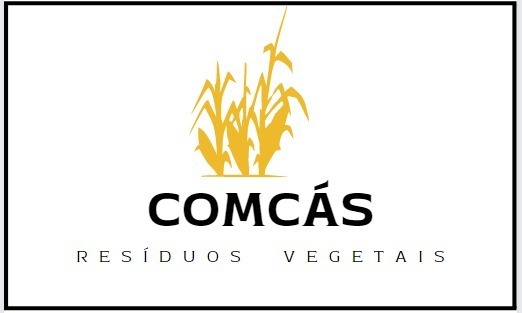Nonetheless, it is concerning that up to 67% of the respondents reported to not know the dose they were consuming. Our proportion of microdosers unaware of the dose is higher than the 46% reported by the GDS2018 (Winstock et al., 2018); however, the latter survey only included numbers on LSD microdosers in contrast to our survey, which included a broad range of psychedelics. Nevertheless, LSD was one of the most prevalent psychedelic substance to microdose with in the current survey as well as in previous studies (Johnstad, 2018; Polito and Stevenson, 2019). The preference to microdose with LSD may be due to feasibility, as users can measure the amount with a pipet or cut the blotter paper into smaller tabs. Accordingly, the GDS2018 reported that 52.5% use the cutting method to dose LSD (Winstock et al., 2018), despite the fact that LSD can be unevenly distributed on the blotter paper and is therefore not the most precise way of dosing (thethirdwave, 2018). Nevertheless, specifying the exact dose is difficult for respondents (Johnstad, 2018), which might be due to not knowing its purity and/or not having the right equipment to adequately dose when using such small amounts (thethirdwave, 2018).
The risk of an adverse cardiovascular event due to hERG(human ether-a-go-go-related protein) potassium channel blockade is low, with hERGassay results demonstrating minimal microdosing long term effects effect of psilocybin at concentrations up to1000 μM (nominal) and completely without effect at 100 μM. That means that unwantedcardiac chronotropic effects with microdosing are very unlikely as the maximumplasma concentration of psilocybin produced by a 25-mg dose would not reach 160 nM(Brown et al.,2017). Popular psychedelics used in microdosing include LSD, MDMA, psilocybin, mescaline, ayahuasca, and DMT. According to a 2022 study by Columbia University, psychedelic microdosing has become increasingly popular, with over 5.5 million people in the United States microdosing in 2019.
Tolerance and Microdosing: What Are the Long-Term Risks of Microdosing?
Psilocin acts as a partial agonist at the 5-HT2A receptor with 46%(+/−2.4) response compared with the response produced by serotonin for signallingthrough the phospholipase C (PLC) pathway (Kurrasch-Orbaugh et al., 2003). It has alower binding affinity to the 5-HT2A receptor compared to LSD (Rickli et al., 2016).Currently there is only one study of the in vivo cerebral 5-HT2A receptoroccupancy produced by the psilocybin metabolite psilocin in humans. That was done bythe Copenhagen group led by Knudsen who used the PET tracer11CCimbi-36. This tracer is an agonist of the 5-HT2Areceptor and therefore particularly sensitive to displacement by another agonist,psilocin. Having performed a dose-finding study of psilocybin that ranged from 3 to30 mg p.o. Per person, they found that the plasma concentration that produced a 50%occupancy of the 5-HT2A receptor was 1.95 (range 1.16–3.15) μg psilocin/L(Madsen et al.,2019).
Associated Data
Broadly these effects could be characterised as improvements in mental health, and alterations in processes related to attention. Weight loss satisfaction did not differ between those who microdosed and those who didn’t, according to Tebra. However, microdosers were 16 percent more likely to feel confident about maintaining their weight loss over time.
All of these reports are confounded by the lackof certainty relating to the actual dose used, or indeed the provenance of theactive ingredient, and the absence of placebo conditions. For a recent review ofpast research with psychedelic microdosing, please see Passie (2019). In general, our findings highlight the diversity of practices gathered under the umbrella of microdosing. Indeed, although the present examination provides the most detailed account to date of the practice of stacking, our conclusions are nonetheless limited by a need for more fine grained detail regarding stacking practices. As such, disambiguating the form of Lion’s Mane consumed by participants is an important distinction for future studies in order to minimize potentially contradictory effects. Further, the literature on stacking substances independent of psychedelic substances is itself limited, particularly with respect to clinical trials with human subjects53,54.
However, as more research is done on the use of psychedelics, both in standard dosages and microdoses, it may be possible that psychedelics find their way into various treatment paradigms. People who have tried microdosing also commonly report experiencing a range of other perceived benefits including the general lack of side effects, the ability to control the dose, and the novelty of the experience itself. Of the research that has been done so far, most of these studies rely on respondents self-reporting their past experiences with microdosing.
Dr. James Fadiman, psychologist and author of The Psychedelic Explorer’s Guide, has responded to this absence of clinical research by collecting thousands of user reports on microdosing. This data may not provide any scientifically verified answers about the effects of microdosing, but the reports—which Fadiman calls “citizen science”—do offer valuable clues for future research. A microdosing practice involves taking small doses of your preferred entheogen every few days for an extended period of time—as long as you find it to be beneficial.
These values equate to a recreational dosing range of 8.6 to 14.7mg of psilocin per dose. Thus, a microdose would range from 0.43 to 0.73 mg ofpsilocin per dose because a microdose of psilocybin is generally one-tenth of a fulldose (Fadiman, 2011).That positions a recreational dose of psilocin between a low and medium dose and amicrodose below a very low dose. However, variations in psilocin content betweendoses of dried mushroom may be seen due to variations between individual fungiwithin a species. A microdose of LSD ranges between 10 and 20 μg with 20 μg beingthe upper limit that might already produce perceptual changes in some. A microdoseof ibogaine hydrochloride is approximately 25 mg (Kroupa and Wells, 2005), and when smoked,that of N,N-dimethyltryptamine (DMT) is approximately 6 mg (May, 2018).
Some people with certain medical conditions such as anxiety may find that these substances can make their symptoms worse. People who have a history of psychotic disorders such as schizophrenia or bipolar disorder may want to also avoid psychedelic substances at any dosage level. Because microdosing involves much lower doses, people are less likely to have these negative side effects. However, it is also important to be aware that even sub-hallucinogenic doses of these substances can produce unwanted and unpleasant side effects.
People are ‘microdosing’ weight-loss drugs like Ozempic. A GP explains the risks
Recruitment for this study occurred through online forums that were mainly very positive about the effects of microdosing. As such, these results may be affected by sampling bias, and may under represent individuals with negative or ambivalent experiences of microdosing. Furthermore, as might be expected in an observational study of individuals who are interested in psychedelics, there was some concurrent use of higher dose psychoactive substances and non psychedelic substances that may have had some influence on these results. A better design would certainly be to conduct an experimental study with controlled doses of known substances and a placebo comparison condition. The legal and bureaucratic limitations around psychedelic research make the approval process for such a study prohibitive. As an alternative, in implementing the current design we aimed to demonstrate that it is possible to investigate the effects of psychedelic substances in a systematic observational paradigm, using an automated and anonymous communication system.
- While preliminary findings demonstrated the therapeutic efficacy of full psychedelic doses in the treatment of depression, anecdotal reports suggest that lower doses, without the psychedelic experience, are beneficial too.
- Using a MonitorRating Questionnaire with a 5-point scale, they found that a dose of 5 mg/70 kgincreased stimulation, distance from ordinary reality and sense of peace.
- A limitation ofthe present article is the focus on psilocybin even though online fora suggest thatrecreational LSD microdosing may be as common (if not more so) than psilocybinmicrodosing (, 2019).
- In the past few years, the issue of ‘microdosing’psychedelics has been openly discussed in the public arena with several books (Cruz, 2017; Kumar, 2016; Waldman, 2017) claimingvalue to the authors who tried this concept.
Perceived Benefits
However, some findings suggest that, like psychedelic users more broadly, microdosers are disproportionately male and lower in education and income relative to non-microdosers9,30. Interestingly, microdosers report higher levels of past year substance use but lower levels of substance use disorders, anxiety disorders, and negative emotionality3,15. Of note, these findings were also published 1 year earlier, though less methodological detail was provided.43 The test-retest questionnaire was assessed after administration of 60 mcg LSD. Only the findings of the three studies administering low doses of LSD are described here. These all included self-rated and observed mental effects (e.g. perception/hallucinations, confusion/insight, nervousness, anxiety) and physiological measures (e.g. pupil size, blood pressure).
Psilocybin is a naturally occurring psychedelic compound found in various species of mushrooms. When ingested, psilocybin is metabolized into psilocin, which interacts with serotonin receptors in the brain to produce altered states of consciousness and perception. The Drug Enforcement Administration (DEA) describes these substances as having “no currently accepted medical use and a high potential for abuse.” This means that it is illegal to cultivate, possess, or sell such substances for either personal use or distribution. Popularly consumed in tobacco products, people who microdose nicotine suggest that it can help improve memory and focus.
- Various studies have highlighted the effects that LSD and psilocybin have on the default mode network, or DMN; a system in the brain that has been shown to be overactive in depression.
- Microdosers may interpret these subtle and ambiguous effects in line with their expectations.
- Most popular press stories on microdosing have mentioned this three day cycle 8,9.
- MAPS, the Multidisciplinary Association for Psychedelic Studies, offers a list of certified therapists and guides trained in safe psychedelic-assisted therapy.
- Findings showed that all respondents in the present survey had at least used 1 regular dose of a psychedelic, which was expected as the survey was advertised for psychedelic users.
While a number of different substances can be used, those most commonly utilized for microdosing are the psychedelics LSD and psilocybin. These tend to be the most researched and are often easier to obtain than some lesser-used substances. It’s not clear whether microdosing has any benefits, but it does have some serious risks. Talk with your doctor about safe ways to boost creativity and mental stamina.
Pamela Kryskow is a member of the clinical advisory board of Numinus Wellness which is a company that provides psychedelic psychotherapy services. Kalin Harvey is the CTO and co-founder of Quantified Citizen which is a company that produces software for decentralized mobile research, which was used in this study. Paul Stamets is a minority investor in Quantified Citizen and is an applicant on pending patents combining psilocybin mushrooms, Lions Mane mushrooms and niacin. Eesmyal Santos-Brault is the CEO and co-founder of Quantified Citizen which is a company that produces software for decentralized mobile research, which was used in this study. Kim PC Kuypers is a principle investigator on research projects, the present study not included, that are sponsored by Mindmed and Silopharma which are companies that are developing psychedelic medicines. Vince Polito is a science advisor for Mydecine Innovations Group, which is a company that is developing psychedelic medicines.
Treating high blood pressure may help lower risk of cognitive decline
People also react to these substances differently, making it difficult to create a “one-size-fits-all” approach. Popularly known as ecstasy or molly, MDMA is a psychoactive drug that is primarily used for recreational purposes. It has energizing effects and enhances feelings of empathy and self-awareness. Although generally considered safe, too much psilocybin may lead to life-threatening heart, lung, and liver problems. Third Wave’s mission is to nurture the emerging psychedelic ecosystem by providing individuals with research-based education, access to vetted providers, and membership in our global community of psychedelic pioneers.
Despite this, there has been minimal improvement in the efficacy of these medications in the last few decades. These medications are slow to act, have several adverse effects, and only show improvement in ⅔ of patients 2. This has encouraged patients to seek alternative methods of treatment, such as microdosing. Despite known unwanted effects, standard antidepressants, or SSRIs (selective serotonin reuptake inhibitors), continue to be prescribed because of the large volume of controlled, clinical trials that demonstrate their safety and efficacy. The same cannot be said for psychedelic use however, due to the controversial nature of funding research into illicit drugs, particularly those that cannot be patented by pharmaceutical companies. Therefore, the substantial anecdotal support for microdosing, notably their reported lack of relative side effects, cannot be reliably concluded.
The most reported side effects while microdosing were psychological in nature and occurred acutely. To validly assess small treatment effects, study sample sizes need tobe larger than those that are common in experimental psychiatric research.Additionally, sensitive measures need to be used. Many validated psychiatric scalesmay not be sufficiently sensitive to detect small drug effects, and simpledrug-effect visual analogue scale ratings are likely better. Furthermore, vitalsigns could serve as a simple objective measure of reactivity. However, psychiatricstudies typically have shortcomings with regard to performing vital signassessments.









